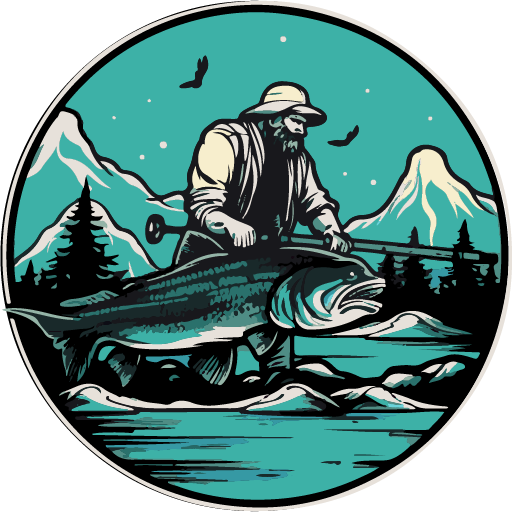All about Inshore Fishing

Fishing is a popular pastime enjoyed by people all across the country.
There are many different types of fishing, each with its challenges and rewards. Inshore fishing is a particularly enjoyable type of fishing that can be done almost anywhere there’s a body of water.
In this blog post, we’ll discuss what inshore fishing is, some of the best places to do it, and what you need. So read on to learn more about this fun and rewarding activity!
What Is Inshore Fishing?
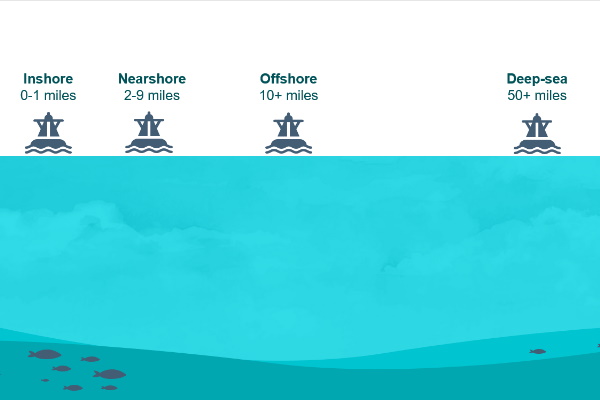
Let’s take a look at what exactly in shore fishing is. It typically means going out to sea and casting your line in waters that can range from just inches deep, up to 15-20 feet depending on where you are located geographically speaking!
Inshore fishing is a type of fishing that takes place in sheltered waters such as bays, estuaries, and lagoons. It typically involves fishing from a boat or shoreline, using light tackle (such as spinning rods) to catch smaller species like panfish and baitfish. Inshore anglers may also cast for larger game fish such as bass, muskie, walleye, and catfish.
Fishing doesn’t have to be an activity that takes place in deep, open waters; you can have a lot of success fishing just off the shore. This is a great way to enjoy yourself while also having the opportunity to bring home some tasty catches.
Difference Between Inshore vs Offshore Fishing
Inshore fishing and offshore fishing are two very different types of fishing, each with its own set of advantages and disadvantages. The main difference between the two is the depth at which you will be fishing.
In shore fishing is usually done near shore, in shallow water, and with light tackle. It’s typically a calmer, more relaxed type of angling where you don’t have to worry about battling big waves or dealing with strong currents.
Offshore fishing, on the other hand, is usually done further out in open ocean waters and requires heavier equipment such as reels, rods, and baits that are specifically designed for larger catches. You’ll also need to be prepared for bad weather conditions at sea.
The other major difference between inshore vs offshore is the type of fish you can catch. Inshore anglers typically target smaller species like panfish or baitfish, while offshore fishermen go after the bigger game such as tuna, marlin, mahi-mahi, and other larger saltwater predators.
What Popular Species of Fish Can You Catch Inshore?
The most popular inshore species of fish you can catch include bass, tarpon, snook, cobia, flounder, and trout. Depending on where you are located geographically speaking there may be more or less available fish to catch in the area.
Bass is one of the most popular gamefish that is caught inshore due to its size and fight. It’s important to note that there are many different species of bass so it’s best to research which species you might find in your area before you head out fishing! There are several very well known bass lakes here including; Lake Dixon, Lake Jennings, Miramar Reservoir, and Lake Murray (California).

Snook is another great target for inshore anglers as they are a fun-fighting fish as well as delicious when cooked properly. They tend to prefer warm climates, so if you are in a tropical area you’re more likely to find them.
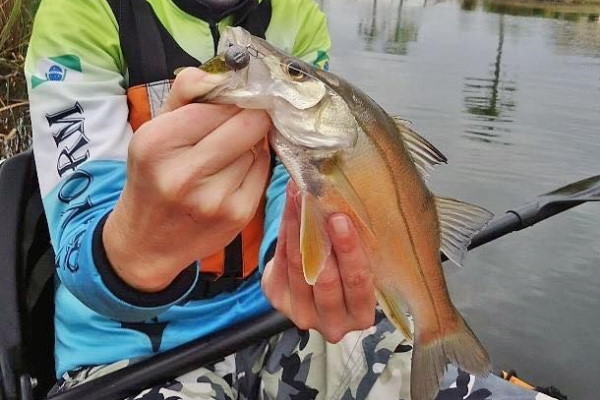
Redfish, also known as red drum, is an iconic inshore species. It is a great game fish and can be found in most coastal areas. They are especially abundant along the Gulf Coast of Florida.
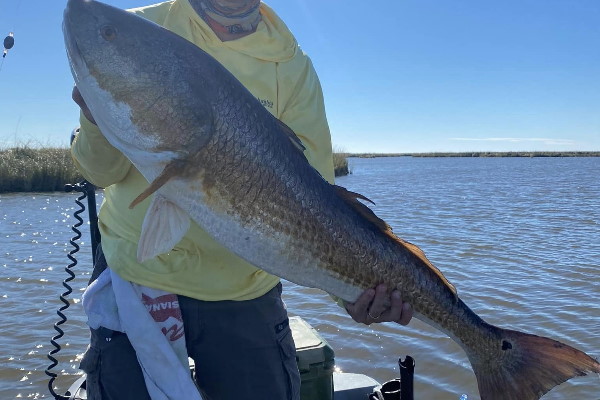
Spotted seatrout is also called speckled trout and can be found in abundance on the Gulf Coast. They tend to aggregate during spring through fall when water conditions favor them, though they do not leave this area entirely! This makes it a perfect time for beginner fishermen as well since your first catch will likely end up being an impressive one-of these bad boys don’t run very far so once you’ve caught one make sure not to let go until ready because there’s always more where those came from!

Tarpons are another popular species that anglers like to target inshore. These fish can grow to be very large and put up an impressive fight, making them a great challenge for the experienced angler.
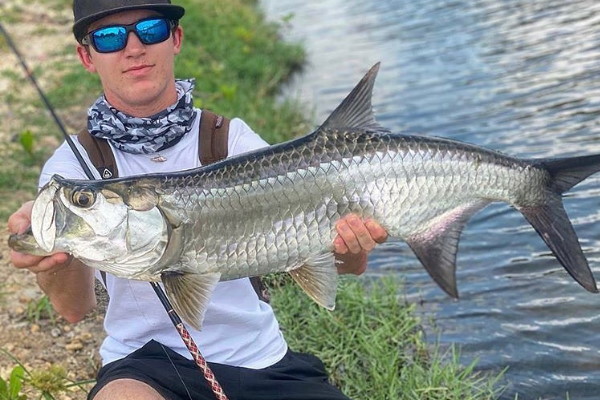
Bonefish is another species of saltwater fishing inshore game fish that is popular among anglers. It tends to stay in shallow, warm waters and can be found in areas with sandy bottoms and seagrass beds.
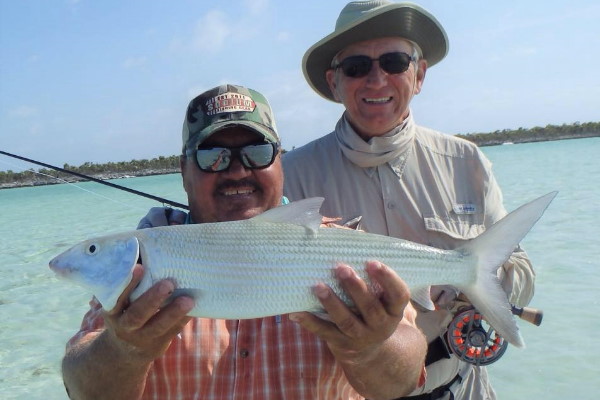
Barracudas are known for their aggressive nature and impressive size! Barracudas are typically found around reefs or wrecks where they hunt for food so if you’re looking for this species make sure to keep an eye out near these areas when saltwater fishing inshore.
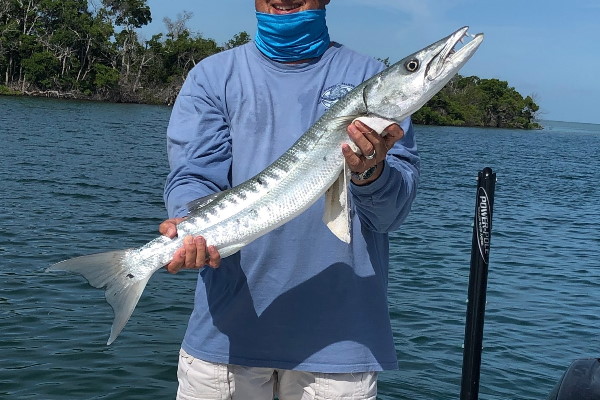
Spanish Mackerel is another popular species that can be found inshore. These fish tend to travel in large schools and can often be seen leaping out of the water chasing baitfish. They are a great catch for anglers due to their hard-fighting nature as well as being delicious when cooked properly.
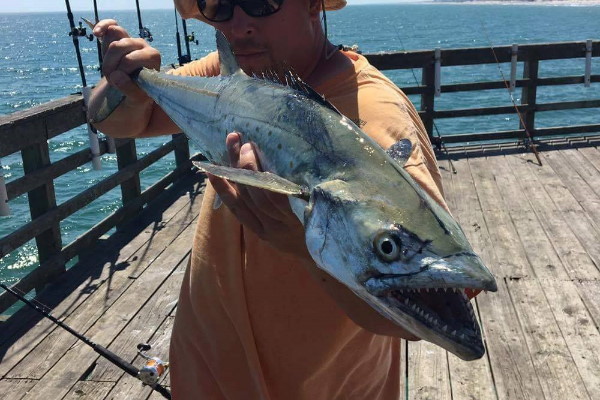
Shark fishing is also popular in inshore waters, though it requires more powerful tackle than just a spinning rod. If you want to get your kids interested in fishing, take them on a Shark charter! The species that frequent inshore waters are Bonnetheads and Blacktips. These sharks aren’t very picky about their food so they will go after anything. You can find these types of fish near coral reefs where there’s plenty going vertical while also hovering over depths between 10 feet underwater. If you’re an experienced angler looking for a big catch, shark fishing can be a great way to spend your day!
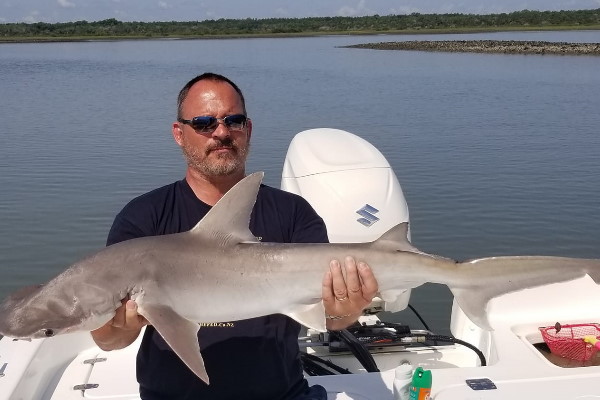
Flounder is a species of flatfish that is popular among inshore fishermen due to its delicate white flesh. It’s best caught with live bait or jigs near rocky bottoms or over grass beds! There’s even a special fishing technique often used for these fish that makes them easier than ever before! The Pacific cousins and California Halibut are other great options if you’ll be out there all year but during winter.
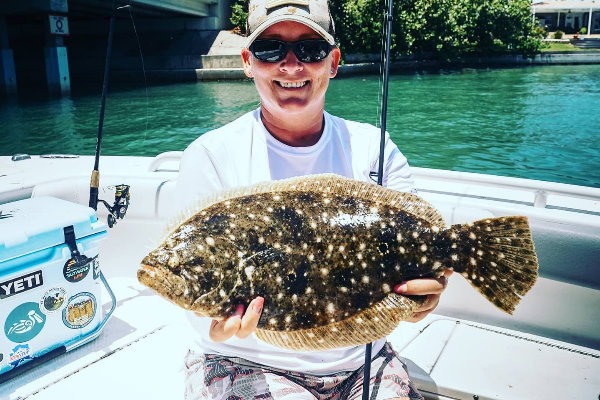
With the variety of species available and the easy access from shore, it’s no wonder why this type of fishing has become so popular. Whether you are an experienced angler or just starting, there’s something for everyone when it comes to inshore fishing!
Where Can You Inshore Fish?
In shore fishing can be done in all coastal areas, bays, estuaries, and tidal flats. Popular spots are close to shore and near bridges, jetties, and other structures such as piers or even mangroves where fish like to hide. In some cases, you may even need a boat to reach certain locations so always make sure you know the regulations which apply in your area before going ahead!
Grass Flats: Grass flats are areas where the water is shallow but has a lot of vegetation. These areas provide shelter and food for many different species, making them an ideal location for inshore fishing. These “grassy” flats in water that ranges from 4-10 inches deep provide an opportunity for anglers who want their chance at some freshly caught seafood!

Mangroves: Mangroves are popular spots for inshore fishermen due to their dense structure and abundance of small baitfish. This environment provides plenty of cover and protection from predators which makes it a great place to catch fish! The fish that call this habitat their home include redfish and snook. You’ll need some patience as well but these areas can be very productive when it comes to inshore saltwater fishing for them.
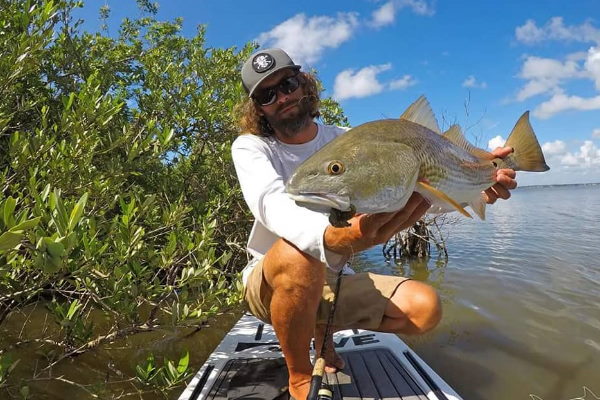
Reefs: Reefs are structures made up of rocks, coral, sand, or other materials that form underwater shelves or walls. They can provide excellent habitats for several types of fish and provide anglers with good opportunities to catch both smaller species as well as larger ones. In places where you can’t find any natural reef, things like old bridges or construction materials make great artificial options!
Channels: Channels are long and narrow passageways in coastal waters that often hold large concentrations of fish. You can find them near home as well as in open ocean areas, providing anglers with plenty of chances to catch some big species! These channels often provide shelter from larger predators so it’s a great place to target everything from tarpon to snook and more.
With all the different options available, you’re sure to have a great time out on the water no matter where you decide to try your luck. So grab your tackle and head out for an unforgettable in shore fishing experience!
Best Places To Go Inshore Fishing
When you’re looking for a place to go inshore fishing, there are many different factors to consider. For example, what type of fish species do you want to target? And will you be fishing in freshwater or saltwater? Here are some of the top places across the United States where you can find some opportunities:
1. Florida:
With its abundance of bays, estuaries, and lagoons, Florida is one of the best states in America for inshor fishing, with a wide variety of species available.
Some of Florida’s outstanding fishing spots are:
The Florida Keyes:
Grab your fishing rod and head down to the Florida Keys! This 125-mile-long chain of islands is situated along the southern coast, connected by 42 bridges. Its pristine waters are perfect for both commercial and recreational fishermen alike.
Tarpon, Permit, Bonefish, snook, redfish, crab, Great Barracuda, etc., are the top popular species in this location. This spot has been known as one of the hottest places in Florida with catching these majestic creatures on your line! It’s important you reserve an entire day if possible because there won’t be any spots available during busy times.
North of the islands is an area known to locals as “the backcountry” – and here your inshore fishing adventure will most likely take place. The mangroves that line these waters provide perfect cover for tarpon, permit (a type of fish), snook, or trout who call this their home too! If you’re looking specifically in Florida’s Keys then be sure not to miss out on fly-fishing opportunities.
Merritt Island National Wildlife Refuge: Located on the Atlantic Coast near Titusville, this refuge holds an abundance of fish species in its estuaries and lagoons.
Indian River Lagoon System: The Indian River Lagoon system is one of Florida’s most diverse ecosystems with more than 600 species of fish including snook, tarpon, redfish, trout, and flounder.
Mosquito Lagoon, Florida
Mosquito Lagoon, Florida is a pristine water where you can fish for big gamefish in an untouched natural environment.
The eastern side of the state has long been known as one place with great fishing opportunities, and this 21-mile stretch from Ponce de Leon Inlet near New Smyrna Beach to Cape Canaveral fits right into that tradition.
You might catch some tarpon on light tackle or fly in the Nort. But whatever strikes your fancy there are plenty more shrimp (and other crustaceans) waiting just under their noses in the south.
Cape Coral, Florida
The city in Southwest Florida has an incredible selection of fishing spots. As they say: location location location! Cape Coral (and by extension Fort Myers) enjoys access to the Caloosahatchee River – one side flows into Biscayne Bay while another feeder stream leads towards Pine Island Sound; along with Estero Bay right off its coast you’ll find plenty more locations perfect for your next excursion out on land or water alike…depending upon what period it may be during seasonally-when anglers can expect to see snook, tarpon, mangrove snapper, trout, redfish, and sheepshead.
Apalachicola Bay, Florida
Florida’s Panhandle is a fisherman’s paradise. From the emerald coast to Florida’s forgotten forest, anglers can find healthy populations of inshore species like trout and redfish in Apalachicola Bay or along its rivers/ channels year-round. But it doesn’t stop there! If you’re looking for something really special then head over to Colts Neck National Wildlife Refuge where sheepshead lives too – just waiting on your next fishing trip so they may be caught by an expert hand bend at their throat.
The best way you can enjoy this area as well? Hire one experienced guide from Apalachicola.
2. Texas:
The Lone Star state is home to some excellent inshore fisheries including Galveston Bay, Corpus Christi Bay, and Sabine Lake. Some popular spots include:
Galveston, Texas
The most charming beach in Texas is Galveston, which offers many attractions for anglers. With a wide variety of gulf beaches and flats to explore as well as piers with plenty of room on them you’re sure to find what you’re looking for at this perfect location!
As an avid fisherman myself I can tell that there are several different types of approaches when fishing but not all places give us such versatility here so we love coming back because it lets our favorite pastime: wading through shallow waters near reefs where bass seem especially abundant, trolling around pier debris or anchors just offshore then finally netting.
The most popular fish in Galveston, Texas are black drum, redfish, flounder, speckled trout, etc. With an ample amount of waterways and piers to offer fishing opportunities for avid anglers, it’s no surprise that this area has become one many people visit regularly when they want some time outdoors on the water!
Numerous guides can help newbies learn about various types or species found along with what we’re best suited to according to their purpose – so hire someone local if possible.
Laguna Madre, Texas
Laguna Madre is a unique estuary in the world with high salinity conditions that allow for some of its fish to grow large. Speckled trout or “specks” can be found throughout this lagoon and are arguably one of -the best fisheries worldwide! It’s located near southern Texas where it forms part of the border with Mexico.
Port O’Connor, Texas
If you are looking for some excellent fishing on the Texas Gulf Coast, then head to Matagorda Bay or Espiritu Santo. With bays and inlets that offer fantastic grounds for catching fish like trout or flounder to grow into large sizes with good numbers–the perfect recipe if you’re looking forward to an exciting day at sea!
The most popular sport fish here? That would be bull reds (growing over 27 inches).
These camouflage masters thrive when fished during fall/winter months because they feed heavily on crustaceans right before reproducing season starts up again.
3. Louisiana:
Venice, located on the banks of the beautiful Mississippi River Delta is a one-of-a-kind spot for fishing because it offers you an endless variety. You can catch all sorts of fish including giants! It’s also great if your goal was just to spend time out on a boat and enjoy some fresh air while catching whatever comes by–but be aware that there are plenty more options available in this area too such as Redfish which run abundantly here due their saltwater environment surrounding rocks along shores filled channels leading into Matagorda Bay
A unique feature about Venice is its land structure surrounded by several reefs making navigation easy yet confusion common. It’s best to hire someone who knows this area well since getting lost in all those channels seems like common territory when you’re out with friends or family.
4. Carolina:
Carolina is another fascinating destination for fishing because it offers so much diversity. From inshore to offshore, this stunning state provides anglers with an endless variety of species and habitats to explore. My best inshore spots include:
Charleston Harbor, South Carolina
The beautiful sandy beaches and natural views of this top destination for anglers make it an ideal location to spend time in the summer. You can fish in all year round.
October is when you can enjoy fishing from shore or boat, whichever suits your preference best-especially if red drums are on offer! If blue water action is what gets you up at dawn, consider hard-core catching from May through September.
Some of the most popular fish in South Carolina are black drum, redfish, and spotted sea trout. You can use similar lures for these species or try using bait with frozen fiction such as sheepshead instead! If you visit this beautiful spot during the summer season then it might be worth your time to catch giant cobia too- they’re usually not caught often enough elsewhere!
Pamlico Sound, North Carolina
Pamlico Sound in North Carolina is a popular spot among fishermen. The calm water and smooth sailing add unparalleled excitement to catching fish during half-day fishing trips out on the ocean floor, where you can find all types of coastal wildlife – from bluefish to large tuna or even grey trout! You might also be lucky enough for giant redfishes that grow steadily due to their surroundings being so favorable (creating an ideal environment).
If your family enjoys outdoor activities like ours do then take them down here; they’ll never regret spending time together while enjoying such exciting sport-hunting opportunities at
Fishing from Boat or from Shore
The pros and cons of fishing from a boat versus shore will depend on what kind of experience you are looking for.
From a boat
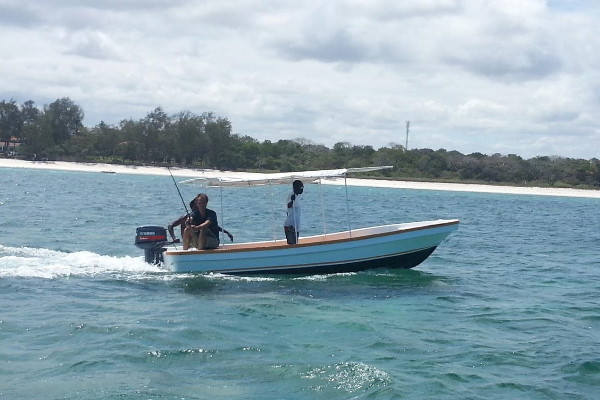
For those who want an exciting adventure in the water with lots going on around them, then nothing beats being at sea!
From a boat, you can go out into deeper waters and cover more ground quickly, either trolling or drifting depending on the type of species you are targeting. This is a great way to locate fish and maximize your time spent on the water chasing them!
For those who want the convenience of an inshore fishing trip without any hassle, hiring a charter boat is your best bet. You get not just a boat but a professional guide that will show you how it’s done and all necessary gear is included in the price!
From shore
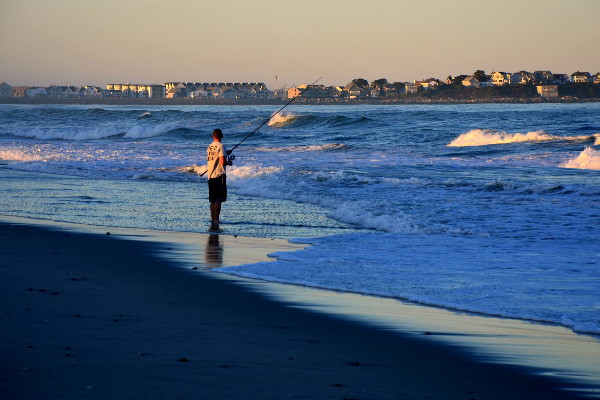
On the other hand, if your day includes only one or two hours spent out there before getting back onto land again then maybe spending time onboard would not be so great either way.
Shoreline fishing can be more fun because you get to interact with your environment. If the weather’s nice, then there are plenty of other things that may distract from shore-based activities like reading a book or talking on the phone while waiting for fish dinnertime!
If you prefer inshore fishing from shore, then there are plenty of options as well. You can cast for redfish, trout, and other species along jetties, in back bay channels, or around docks/piers. You might even catch flounder by simply wading through shallow areas with a gig or even just using your hands to pick up your prey! And if fly-fishing is what gets your heart racing then look no further than North Carolina’s coastal flats – this is a great spot for technical angling!
No matter which type of fishing experience you are after, inshore opportunities abound and can provide some of the best fishing trips around. For those looking to get out on the water and explore all that nature has to offer, inshore is the way to go!
What Equipment do You Need?
Inshore fishing requires a few basic pieces of equipment to get started. These include:
Boat or kayak
Depending on the type of fishing you’re after, you’ll either need a boat or kayak to get out and find the fish. The right boat will make all the difference when fishing. A large and comfortable vessel doesn’t need to fish inshore. A smaller, nimble vessel is best for accessing hard-to-reach areas that are within range of many inshore boats but may opt instead to use a kayak or canoe at times depending on circumstances.
Fishing rod
The right rod for in shore fishing will give you the power and accuracy to find those hard-to-reach places on land, like mangroves. We recommend a longer 6 ft or more length (6–7′ medium heavy rod) as it lets your cast go further before having too much difficulty reaching certain features nearshore such as these tree roots with food underneath them!
A long rod gives you less power to fight against stronger fish, but it’s not necessary if your area consists mostly of inshore species.
Reel
There are not many reel requirements, you can choose 25–30 size reel.
A high-quality spinning reel will do the job in inshore fishing, but a baitcasting reel is a great choice for those looking to target bigger fish. Baitcasters are more expensive and require more skill to use effectively; however, they can help you land bigger catches with less effort!
Lures
Artificial lures are usually used when inshore fishing and come in many different shapes, sizes, and colors. Pick one that matches the type of fish species you’re targeting for the best results. Lures also tend to be cheaper than live bait, so it’s better if you want to cast multiple times without worrying about buying more bait each time!
Line
Your line should match your rod and reel, as well as the type of fish you’re fishing for. Most inshore fishermen prefer braided line because it is strong, abrasion-resistant, and has little or no stretch to help increase sensitivity. Mono-filament or fluorocarbon lines also work well in this situation but require more frequent maintenance than a braid.
You can choose a 20 lb monofilament line if you have no idea.
Not – having a net handy will make catching fish easier since it offers an extra layer of protection for those slippery catches!
Terminal tackle – Hooks, lures, jigs, sinkers, and bobbers all come in a variety of sizes and shapes so make sure to pick the best ones for your particular needs!
Nets – A net can help you land your catch in shallow water.
Bait – Live bait is best when targeting inshore species such as pinfish, shrimp, and crabs.
Cooler/Ice – If you plan on keeping your catch for a few days, then having a cooler or bucket with ice will keep it fresh.
These are some of the basic pieces of equipment needed when venturing out on an inshore fishing excursion. Whether you decide to hire a guide or go at it alone, make sure to have fun and be safe!
FAQs
What is the best tide to fish for redfish?
The best tide to fish for redfish depends on the season and location. Generally, the rising or incoming low tide is better than the falling or outgoing tide because it brings more bait which in turn attracts larger game fish like redfish. However, some areas may be better during different times of the day so do some research before setting out!
Do I need a leader for inshore fishing?
Yes, a leader is important when fishing inshore as it helps prevent break-offs due to the structure of rocks, reefs, and other hard objects you may come across. A leader also helps reduce visibility to wary prey that may be spooked by your line in clear waters. A fluorocarbon leader in the 10–20 lb range should do the trick!
What size bait should I use for inshore fishing?
The size of bait you use depends on what type of species you’re targeting. Generally speaking, smaller baits are better for panfish while larger baits are better for game fish such as redfish or trout. It’s best to experiment with different sizes and see which works best.
How many lines do you need for inshore fishing?
I’ve found that 450 feet of line are more than enough for most inshore work. With a modern, smaller reel and 150 yards worth on the go it’s easy to store all your fishing needs in one place without getting weighed down by extra rope!
What size hooks are for redfish?
Slot-size Redfish are difficult to catch with standard hooks, but a 1/0 circle or j hook can bring them in without straightening out. This is ideal for larger slot-sized fish because it’s not too big and won’t break off when trying to take down smaller reds who would otherwise get away if you were using bigger fighting gear!
Do I need weights for inshore fishing?
Weights can help sink your lure deeper into the water column as well as keep it in one place if you’re using live bait. There are so many different types of weights available on the market today so it’s best to experiment with different sizes and materials to see what works best for you.
Conclusion
Inshore fishing is a great way to spend a day on the water, and it’s also a fantastic way to catch some truly impressive fish. If you’ve never tried it before, we encourage you to go out and give it a try – you won’t be disappointed.
And if you have already enjoyed some time in pursuit of redfish, trout, flounder, or other inshore gamefish, tell us about your experience in the comments below. We love hearing from our readers!
Thanks for reading our article. If you have any questions, leave a comment below. You can see more posts on our website here.
Happy fishing!
Further reading
